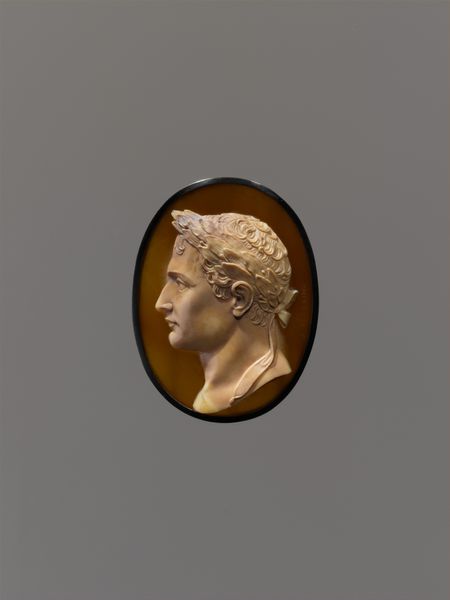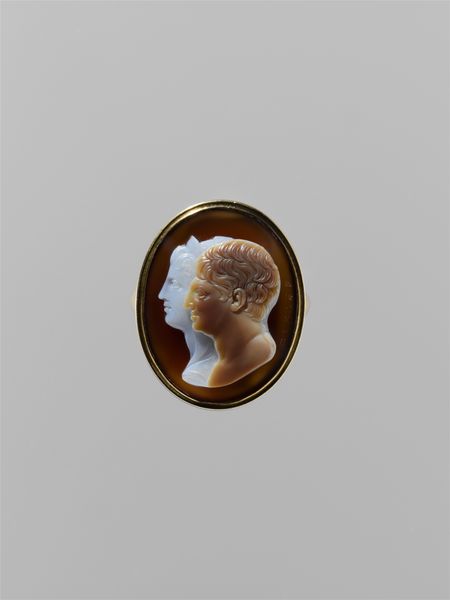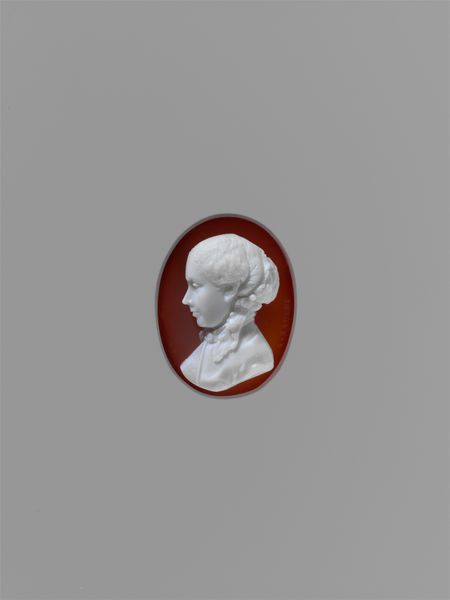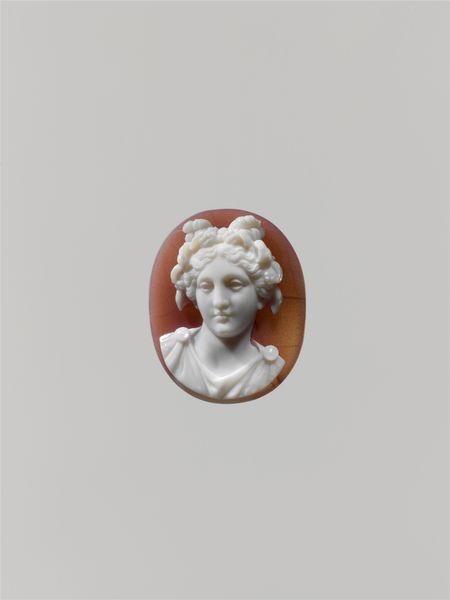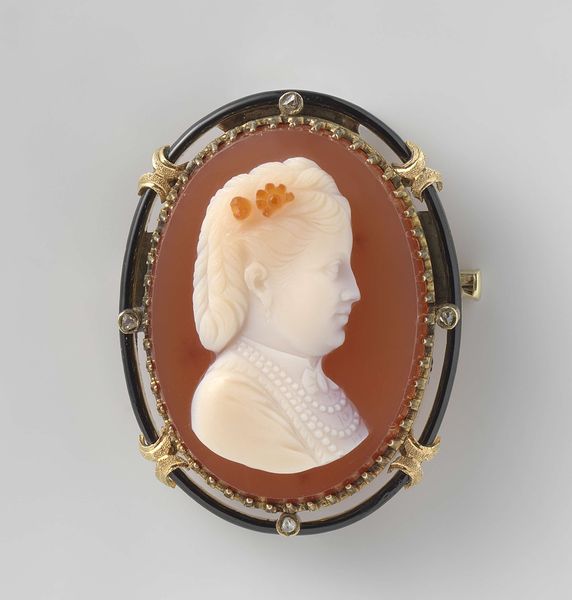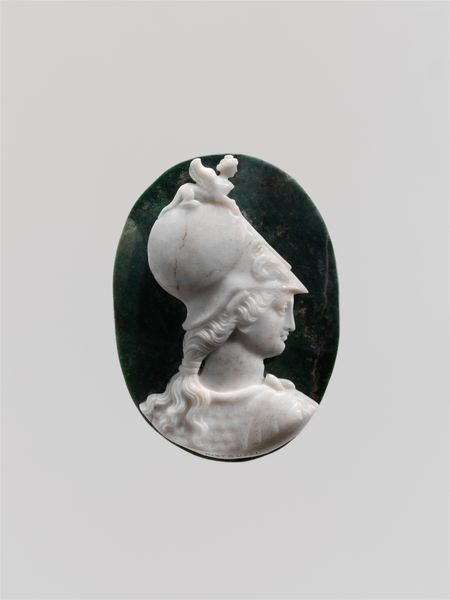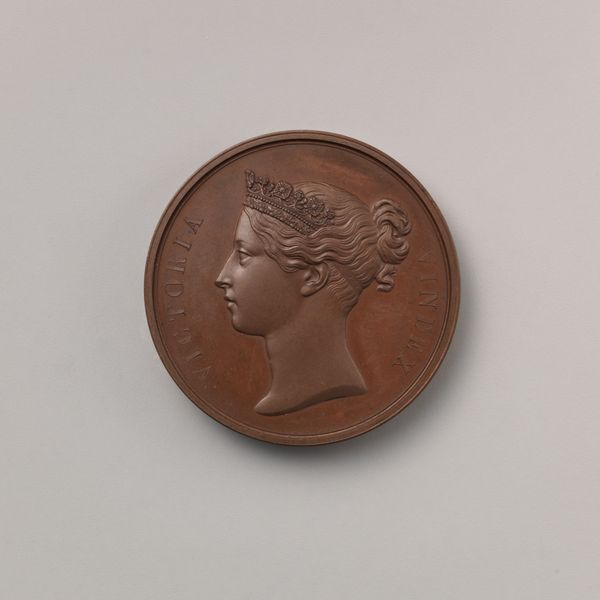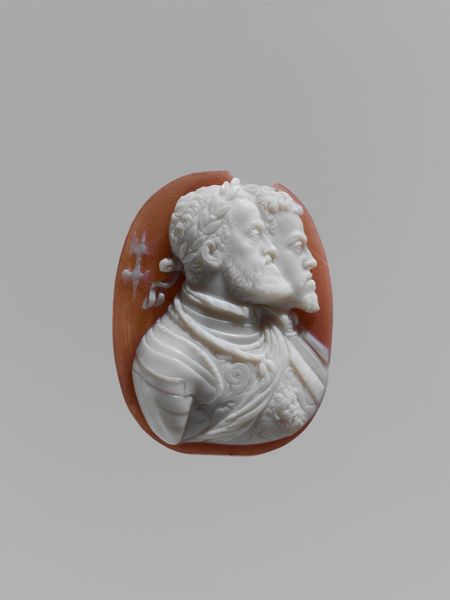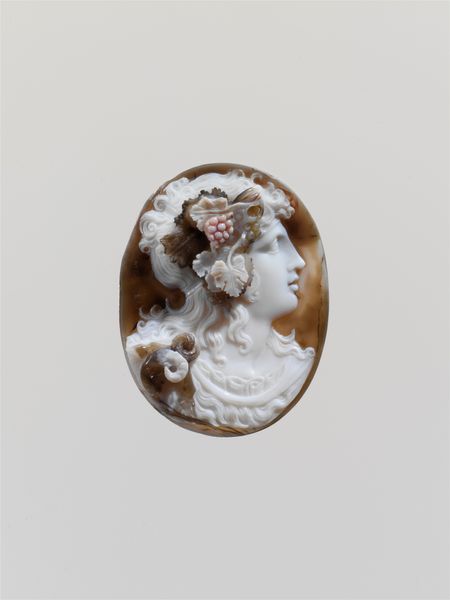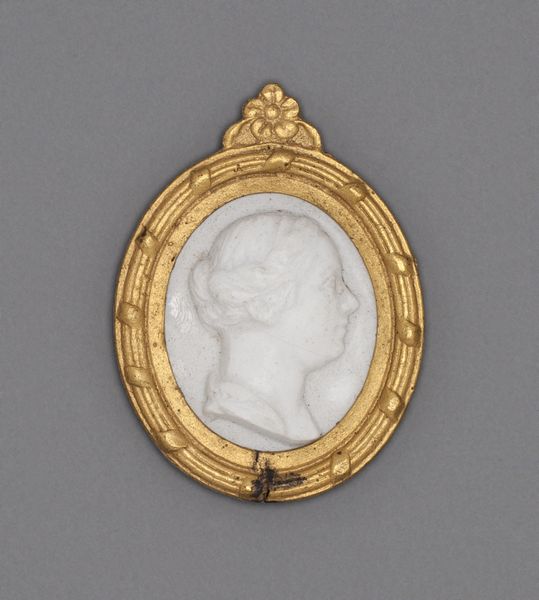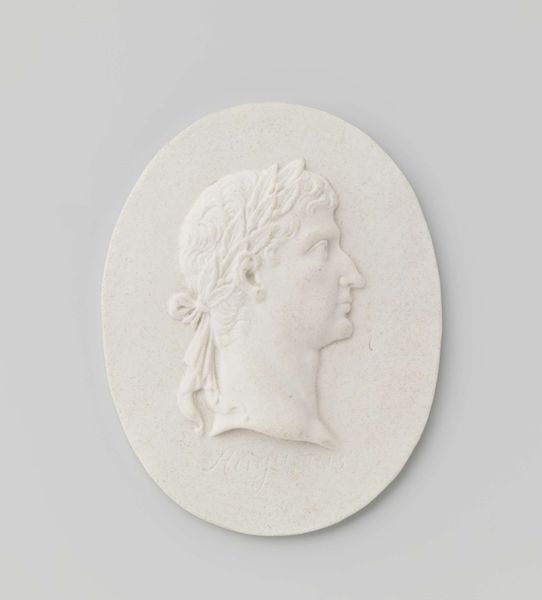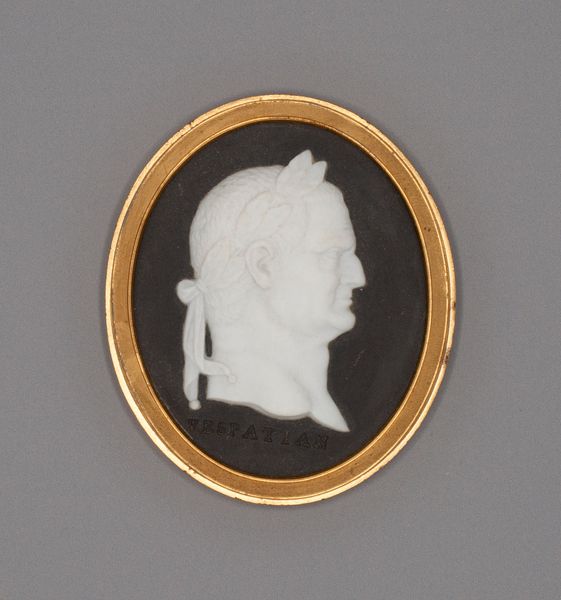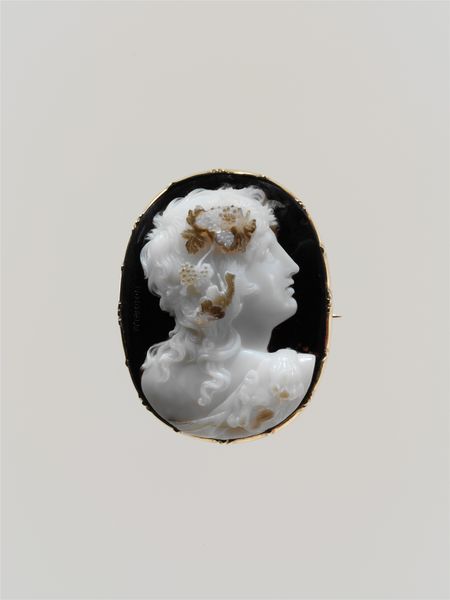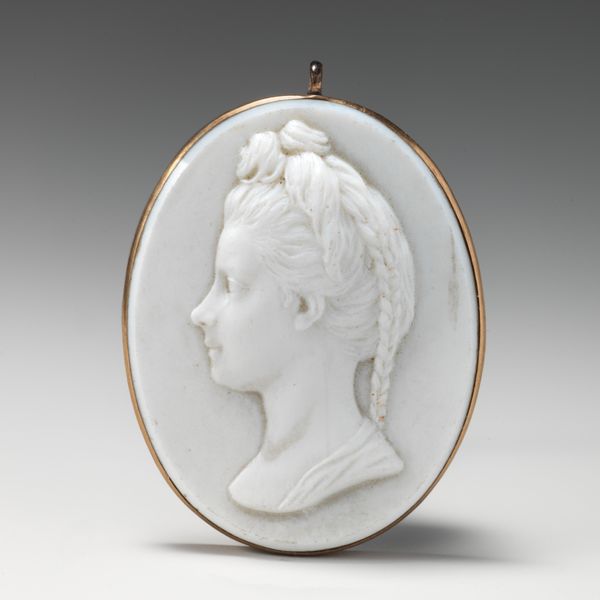
Dimensions: Overall: 1 9/16 x 1 3/16 in. (3.9 x 3 cm); 38.9 x 30 x 8.7 mm
Copyright: Public Domain
Editor: This ivory carving from the late 1860s depicts “The Prince Imperial.” It has a certain detached feel to it, almost cold. What's your perspective? Curator: Well, let’s think about the Second Empire when this piece was created. Carvings like this served to propagate images of power and legitimacy. A figure like the Prince Imperial, then, isn’t just a portrait, but a carefully constructed symbol of dynastic succession, carved in ivory, a material laden with colonial exploitation and thus, symbolic of power and prestige. Editor: So, the material itself makes a statement? Curator: Absolutely. Think about whose stories get told, and by whom. A small ivory carving like this presents a very specific narrative of French Imperial power. It’s polished, refined, seemingly untouchable. But what voices are absent? Whose labor extracted this ivory? Editor: I guess I hadn't considered the implications of the ivory itself. It’s easy to just see the portrait. Curator: Exactly! We have to challenge ourselves to look beyond the surface and ask what this object hides. It may appear a mere portrait, but it really represents the hierarchies and inequalities of its time. Do you think recognizing that shifts your reading of it at all? Editor: It definitely does. Knowing the historical context gives the piece a totally different meaning. It goes from being just a pretty carving to being a statement of power and exclusion. Curator: Precisely! It's about unearthing those silenced stories and understanding how seemingly beautiful objects can uphold complex power structures. It transforms our relationship with art. Editor: That’s a really important perspective. Thanks for making me see it!
Comments
No comments
Be the first to comment and join the conversation on the ultimate creative platform.
